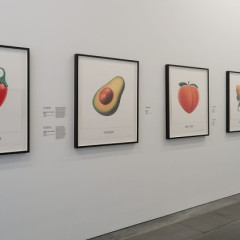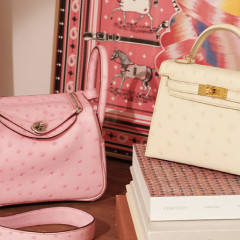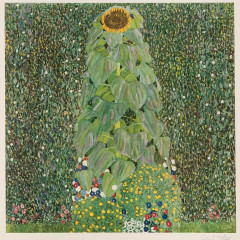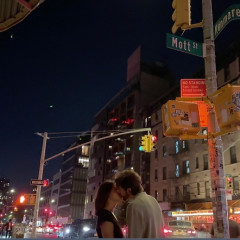Nelson Saiers: "Equality" (2014)

N. S.: The next piece is focused on two things that are very dear to me: one is a belief that all men are equal; the second is a field of math called topology.
Now topology is often referred to as rubber-sheet geometry. It's a field of math that I studied to get my Ph.D. A loose definition of it—avoiding mathematical technicalities: Let's say two objects are equivalent if they're made of Play-Doh. And you could deform one or the other without ripping, tearing, or poking a hole in one of the objects to deform the other.
Now to the painting. If you look at the painting, it's a room with a bunch of objects which look different. So you have a pink-lemonade pitcher with lemonade in it. You have a donut. You have a coffee mug. You have several chairs of different colors. You have a candlestick with a hole for a finger in it. Now, turns out as I said, all these objects look different—whether it's their shape or their color. Now, it turns out, according to topology, they're actually all equal....One observation you can make which hints at that is the fact that they all have one hole.
So granted I gave you this esoteric fact about mathematics. But how is this relevant to the piece? What's the moral of the story, etc.? Now if you look—the perspective of the room is defined by line segments emanating from the background. Now if you look at the intersection point of these line segments and replace the circles on those intersection points, you would spell the word "human" in Braille.
Now to the moral of the story: The perspective one has to take when they look at other people is that they're all equal. And so, although we look different on the surface, we're actually really equal. That's where the rubber meets the road.
[Photo courtesy of Nelson Saiers]


.jpg)
.jpg)



.jpg)
.jpg)
.jpg)




